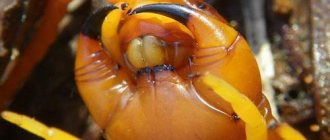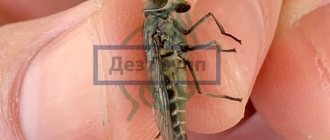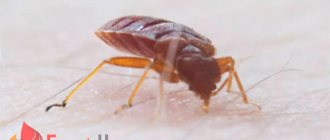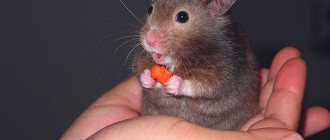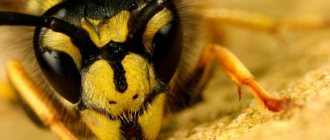Here are just some interesting facts:
- In Moscow, more than 600 rat bites are officially registered every year;
- In the United States alone, rats bite more than 14,000 people each year;
- The number of rat attacks on people around the world reaches 3.5 million per year;
- Diseases transmitted by rat bites kill more than 2,000 people worldwide every year.
At a minimum, this means that rats attack people quite often - much more often than an ordinary city dweller, familiar with rats only by hearsay, might think. On the Internet you can even find videos of such attacks, although in general videos with real, dangerous attacks are extremely rare.
As for the cases when these animals bit a person to death - in such documentary evidence we are talking about people who could not move or were unconscious. Yes, a rat can attack a person, it is even capable of doing this on its own initiative, and not just in self-defense, but such an attack is always limited to only individual bites, even serious ones and fraught with infection.
Pictured is a rat bite:
Agree, it is difficult to imagine that an animal (or even several animals) of a relatively small size could kill a person who is conscious and able to move.
However, those who like to tickle the nerves are actively spreading rumors about giant mutant rats from the subway that can kill a person, as well as stories about the invasion of cannibal rats and the corpses of people allegedly found in the sewers, gnawed by them. In these myths, the danger of rats is greatly exaggerated, but this exaggeration is not always obvious to the person to whom such a story is told. Many people readily believe in stories and cannot distinguish truth from fiction.
So how can a rat attack on a person actually end? And why, in general, do these animals attack? Are they only trying to protect themselves and their home, or do they really view the person as a victim? Are there, after all, true cannibal rats capable of attacking a person en masse and killing him?
Let's find out...
Features of behavior of wild rats
Most rodents prefer to live alone or in small colonies. However, this rule does not apply to wild rats. They are able to unite into huge groups, the number of individuals in which can reach several hundred. The lifestyle of these mammals and their behavior depends on their habitat and environmental conditions.
Nuances of behavior:
- Hierarchy. Rats are social animals that obey unwritten rules. The entire colony is divided into three groups: dominants, subdominants and subordinates. The first include individuals who have won internecine battles and won the right to mate with females. The second group consists of scout rats. They explore new territories and find food. The lower caste includes weak individuals with low reproductive rates.
- Social connections. The main manifestation of the group lifestyle of rats is allogrooming (fur cleaning). It allows you to maintain social connections between individuals and prevent any aggressive actions.
- Tags. Wild rats mark the territory where they appear at least once in their lives. They do this using urine containing pheromones. Thanks to this, rodents mark the boundaries of their territory, give signals and attract the attention of representatives of the opposite sex.
- Search for food. Subdominant individuals are responsible for food in the colony. They are constantly on the move and looking for any edible food. When they detect food, they send signals to other members of the colony.
Extraordinarily loving
But no matter how many rats humanity destroys, there are not just a lot of them, there are a lot of them. Of course, no one is conducting a census of the “rat population”. But biologists have their own methods of counting.
And so they say: in warm countries there are 3-4 rats per person (and some believe as many as 9!). And in New York the ratio is one to one. So think about who is our king of nature - a man or a rat.
Rat.
creativecommons.org
And why all? These rodents are extremely fertile and loving. They have the ability to give birth to babies already at the age of three months, although they usually “puppy” (or “rat”?) closer to a year.
And during the fertile period they mate up to 500 times (!) with different gentlemen. Three weeks after this exciting activity, from 6 to 20 babies are born. According to some estimates, in just 2-3 years of its short life, a rat is capable of producing up to 6 thousand offspring. And each of these “fruits of love” will also produce no less - just give it.
Moreover, they are not threatened with hunger: in warehouses and in human cellars there is always something to profit from.
Rat.
visualhunt.com
What are the dangers of living with rodents?
Most rodents feed on leftover food that people throw away. Because of this, mammals settle in residential buildings or in close proximity to them. All this leads to frequent human contact with the pest. To avoid negative consequences, you should know the harm rats bring to people.
Attention! More than 2,000 people die every year from diseases carried by rats.
Rat bite – how dangerous it is and what to do after the bite
Plague
This disease has killed hundreds of thousands of people over the centuries. In the 21st century, 2000–3000 cases of infection are recorded annually, 7% of which end in the death of the patient. Rodents are considered the main spreader of plague. These harmful mammals are carriers of the plague bacillus, which quickly develops in their body.
In most cases, infection occurs through rat attacks on humans. However, there are situations when the plague was suffered not by rodents, but by fleas living on their bodies.
Infection process:
- The flea takes up residence in the fur of a plague-infected rat and begins to drink the blood of its victim.
- Bacteria enter the insect's stomach and multiply quickly.
- Gradually there are so many of them that they block the esophagus.
- When a person comes into contact with a rat, the flea changes its owner.
- The insect bites its new victim and tries to swallow its blood.
- Due to a clogged esophagus, she has to regurgitate some of the “food” into a wound on the person’s body.
- As a result of this, the plague bacillus enters the human blood.
Encephalitis
Rats are the main target of ticks. These blood-sucking insects wait for their prey and at the right moment cling to its fur. After that, they gnaw through the skin and get to the blood of the rodent. While “eating,” the ticks unwittingly infect the rat with encephalitis (a disease characterized by inflammation of the brain). In the following days, mammals may bite a person and infect him with a dangerous disease.
Manifestations of encephalitis:
- prolonged fever;
- high temperature (38 to 40°C);
- severe chills.
In the absence of proper treatment, nausea, vomiting, headache, insomnia and weakness appear.
Sodoku
Sodoku is often called a rat disease, since it can only be contracted through the bite of this rodent. In the first few days, the bitten person feels great and does not experience any health problems. However, after this the following symptoms appear:
- muscle pain;
- gradual increase in temperature to 39–40°C;
- impaired coordination of movements;
- excessive excitement.
Sodoku can greatly harm a person if left inactive for a long time and if one refuses to take antibiotics. In advanced cases, the likelihood of death increases greatly. If you take timely measures, you can get rid of a dangerous disease in a short time.
Streptobacillosis
A person becomes infected with this dangerous disease after being bitten by a rodent. Bacteria enter the blood and quickly begin to develop. Within a few hours the patient feels unwell. In addition, the temperature rises sharply and allergic rashes appear. If treatment is not started in time, the bacteria will attack the lymph nodes and cause swelling of the soft tissues. In the later stages of the disease, the brain is affected.
Rabies
Today it is not known for sure whether rats have rabies or not. However, scientists suggest that this is theoretically possible. During studies, several characteristic symptoms were identified in rodents caught on the street. All attempts to artificially infect rats with rabies ended in the death of the animal within a few days. During this time, the disease did not have time to develop and harm the rodent.
Rabies in rats has not been officially registered. Despite this, in various countries around the world there are cases of people becoming infected with it after contact with rodents.
Typhus
This infectious disease is considered dangerous to humans. Without proper treatment, bacteria affect the central nervous system and impair the functioning of the cardiovascular system. Typhus can be identified by the following symptoms:
- increase in body temperature up to 40°C;
- Strong headache;
- fever;
- malaise;
- skin rashes.
Despite the dangerous symptoms, curing a sick person is quite simple. To do this, you need to take special antibiotics and create unfavorable conditions for the development of bacteria.
The disease is transmitted by fleas living on the body of the rat. Unlike the plague, typhoid is not transmitted through an insect bite, but through the penetration of harmful microorganisms into cracks in the skin.
Fever
Wild rats can carry infections that cause various types of fever (Congo, Venezuelan, Omsk, Chapre, Q, Lassa). Most of them can kill a person, so when the first signs appear, you should consult a doctor.
Infection occurs in three ways:
- drinking contaminated water;
- bite of an infected tick;
- spread of dry rat excrement with dust.
Attention! Fever can be contracted through contact with a sick person.
Cryptosporidiosis
This is one of the most poorly understood diseases carried by rats. It is caused by parasites that enter the rodent's body and multiply rapidly. A person becomes a victim of cryptosporidiosis if they come into contact with the feces of a sick rat. This may happen under the following circumstances:
- accidental ingestion of water while swimming in a pond;
- eating poorly washed vegetables and fruits (for example, gifts of nature just picked from the garden or taken out of the basement);
- drinking untreated tap water.
Giardiasis
Rats are dangerous not only for their bites, but also for their secretions. An animal's excrement may contain a large number of parasites. The most dangerous of them are Giardia. They affect the small intestine, negatively affect the process of food digestion, and also disrupt metabolism.
You can become infected with giardiasis only when rat waste products enter the human digestive system. This can happen in the following ways:
- drinking water from a river or lake;
- eating poorly washed foods;
- contact with the ground, which contains many parasites.
Tularemia
You can become infected with tularemia in two ways: contact with a sick rodent or inhalation of infectious dust. The first option is possible when you are in places where rats accumulate (for example, a basement), and the second option is when small particles of dried excrement enter the respiratory tract.
Symptoms of tularemia:
- fever;
- heat;
- low blood pressure;
- inflammation of the membranes of the eyes.
Listeriosis
Listerosis is an infectious disease that affects cells of the human immune system. The result of this negative impact is a decrease in the body’s resistance to various viruses and pathology of the nervous system.
In most cases, the spreader of the disease is rats. Their contaminated waste products dry out and are carried over long distances by the wind. Small particles settle on grown vegetables and fruits and also end up in drinking water. A person becomes ill with listeriosis only when sanitary standards and hygiene rules are neglected.
Tuberculosis
One bite from a sick rat is enough to become infected with this serious disease. In addition, bacteria can enter the human body after contact with rodent fur or excrement.
The main symptom of tuberculosis is a cough that does not stop for several weeks. Other symptoms include weakness, high fever and difficulty breathing.
Hepatitis
Hepatitis is an inflammation of the liver that is caused by a viral infection entering the body. Without proper and timely treatment, cirrhosis and other chronic diseases develop. Most rodents are carriers of bacteria. Their excrement ends up on food or mixed with water. When it enters the digestive system, the infection quickly reaches the liver, causing irreparable damage to one of the main organs.
Hepatitis is dangerous not only for adults, but also for children. Because of this, you need to carefully monitor your health and take the necessary measures in a timely manner.
Salmonellosis
Salmonellosis is an acute intestinal infection caused by bacteria. The disease is characterized by pronounced symptoms, which can only be eliminated after long-term treatment.
Main features:
- nausea;
- vomit;
- prolonged diarrhea;
- lack of appetite;
- high body temperature;
- chills.
In most cases, salmonellosis infection occurs as a result of eating contaminated foods. In addition, you can get sick after contact with rodents or their excrement.
Toxoplasmosis
This is a rare infection that only affects people with weakened immune systems (for example, HIV patients or pregnant women). Toxoplasmosis is transmitted through human contact with soil contaminated with rat feces. To reduce the risk of infection, you should thoroughly wash your hands after working in the garden or use disposable gloves.
Dangers of Rat Attacks
However, for whatever reasons, rats attack people, the main dangers of these attacks are always the same: when an animal is bitten, there is a high risk of contracting serious diseases, primarily sodoku and tetanus.
Sodoku is relatively easy to treat, but without therapy it is deadly (its mortality rate in an untreated form is 10%). The disease is accompanied by severe muscle pain, high fever, anemia and exhaustion of the body.
The dangers of tetanus are well known: its consequences include paralysis, nervous disorders, pneumonia, and, in severe cases, death. Even with the use of modern medicines, the mortality rate of the disease is 17-25%, and in remote areas it kills 9 people out of 10 cases.
The photo below shows a rat bite:
If the tetanus pathogen gets under the skin during a bite, then the development of the disease is likely.
Meanwhile, rats cannot tolerate rabies, and infection with sodoku or tetanus from rodent attacks occurs relatively rarely. In general, the probability of contracting any disease from a rat bite is about 2% - this is a sufficient reason to avoid such an attack, and after it, see a doctor.
Another danger of rat bites is, in fact, injury. According to statistics, after attacks by these animals, victims are left with:
- Damage to soft tissues characteristic of rodent bites - in 61% of cases;
- Lacerated wounds - in 14% of cases;
- Abrasions - in 12% of cases;
- Bruising without skin damage - in 6% of cases;
- Hematomas - 5% of the consequences of bites;
- Finger fractures - 2%.
Often, during one attack by an animal, a person receives several different injuries at once.
Statistics were collected based on an analysis of about 500 rat attacks on people. At a minimum, it shows that these animals are quite strong and can leave serious wounds on the human body.
The photo below shows a girl who was attacked by a rat:
All these injuries may not seem so significant compared to those that a person receives when a rat deliberately tries to chew off a piece of his flesh. In particular, there have been documented cases where a rat bit off a child’s nose or earlobe, and for many drunk people, animals even chewed off the phalanges of the fingers. In addition, stories are described when rats killed a person who was unable to move and defend himself.
Parasitic diseases
Diseases caused by parasites are considered one of the most common in the world. They appear as a result of the activity of protozoa, helminths (worms), as well as lice, ticks and other similar creatures. All of these living organisms can be carried by rats and other rodents.
Methods of infection:
- direct contact with the rat;
- getting rodent feces into drinking water or food.
Asthma attacks
Because of rats, people suffering from this asthma may experience suffocation attacks. They occur as a result of an allergic reaction to rodent fur or waste products.
Allergic reactions
Rats, like many other animals, can cause allergies. In this case, the disease proceeds in a standard way and is accompanied by characteristic symptoms. These include:
- tearfulness;
- sneezing;
- rhinitis;
- rash.
In most cases, the causative agent is rat fur. However, there are cases where the cause of an allergic reaction was urine or dry excrement of a rodent.
Exacerbation of atopic dermatitis
Atopic dermatitis is a chronic skin disease that is caused by a hereditary predisposition. It is characterized by periodic redness of the skin, accompanied by severe itching. Most often, exacerbations of the problem occur when the patient comes into contact with an allergen. Rat droppings or fur act as an irritating factor.
Hemorrhagic fever with renal syndrome (HFRS)
Hemorrhagic fever with renal syndrome (HFRS) is a group of clinically similar diseases caused by hantaviruses of the family Bunyaviridae.
Symptoms of Hemorrhagic Fever with Renal Syndrome (HFRS) usually develop within 1–2 weeks after exposure to infected materials, but in rare cases can take up to 8 weeks to develop. Initial symptoms appear suddenly and include severe headaches, back and abdominal pain, fever, chills, nausea and blurred vision. People may have facial flushing, sore or red eyes, or a rash. Late symptoms may include low blood pressure, acute shock, and acute renal failure, which can cause severe fluid overload. The severity of the disease varies depending on the virus causing the infection. Hantaan and Dobrava virus infections usually cause severe symptoms, while Seoul, Saaremaa and Puumala virus infections are more mild. Full recovery from rat disease may take weeks or months.
Hemorrhagic fever with renal syndrome occurs throughout the world. Haantan virus is widespread in East Asia, especially in China, Russia and Korea. Puumala virus is found in Scandinavia, Western Europe and Western Russia. The Dobrava virus is found mainly in the Balkans, while the Seoul virus is found throughout the world. The Saaremaa virus is found in Central Europe and Scandinavia. In America, hantaviruses cause another disease known as hantavirus pulmonary syndrome.
Hantaviruses are carried and transmitted by rodents. People can become infected with these viruses and develop hemorrhagic fever with renal syndrome after inhaling aerosolized urine, droppings, or saliva from infected rodents or after coming into contact with dust from their nests and cages. Infection can also occur when contaminated urine or other materials come into direct contact with broken skin or mucous membranes of the eyes, nose, or mouth. Additionally, people who work with live rodents can become infected with hantaviruses through the bites of infected rodents. Transmission from one person to another can occur but is extremely rare.
The gray or Norway rat (Rattus norvegicus) is a reservoir for the Seoul virus.
In what cases is an animal attack possible?
A rat attacks a person only as a last resort, when it has no other options to save or protect its offspring. During an attack, the rodent is able to rush at its enemy and bite him, causing severe pain.
Interesting! More than 3,500,000 cases of rat attacks on people are recorded annually around the world.
Self-defense
Most often, a rat attacks a person or an animal hunting it (for example, a cat), out of a desire to save its own life. However, she does this only if there is no way to escape or hide in a safe place. During self-defense, the rodent tries to bite the enemy. In addition, he intimidates the uninvited guest by jumping and loud rat squeaking.
If you accidentally encounter a brave mammal, it is better not to take risks and give it the opportunity to escape.
Interesting! The average bite force of a rat is 500 kg/cm2.
Hunger
Rats are omnivores. They can pick up food scraps found in landfills, destroy granaries, run into chicken coops and other accessible buildings. Among these rodents there are cannibals. If they are very hungry, they can feed on dead rats or hunt cubs.
People become victims of a hungry rat extremely rarely. In most cases, this happens in poor countries where rodents cannot find other food. During an attack, the mammal bites off a piece of skin or flesh and then quickly runs away to a secluded place.
Objects of rat attack:
- Small children;
- connected people;
- immobilized patients;
- people who are heavily intoxicated.
Human provocations
There are people who like to tease animals, including rats. Such a rash action can frighten the rodent and force it to attack the offender.
Possible consequences of provocation:
- painful bite;
- scratching;
- damage to various parts of the body (for example, eyes).
Rabies
Rats love to walk around and look for food in places where people live. Under favorable conditions for rodents, the number of individuals in the colony will gradually increase. At the same time, the risk of rabies spreading will increase.
A sick animal behaves aggressively, as its sense of fear is dulled. Because of this, the rat can attack even large animals and humans. One bite will be enough to become infected with this dangerous disease.
Increased aggressiveness of females
Rats fiercely protect their offspring. Noticing potential danger, the female begins to rush at the enemy. At the same time, she tries to intimidate him and take him away from the kids.
If a predatory animal or person tries to destroy the nest, the rat will bravely defend it, not sparing its own life.
First actions after a bite
The first thing to do if bitten by a rat is to thoroughly rinse the affected area and then thoroughly treat it with an antiseptic. Any remedy will do - hydrogen peroxide, Miramistin, alcohol, Chlorhexidine.
But what you shouldn’t do if a rat bites you until you bleed is try to stop the bleeding. Firstly, deep wounds can bleed for a long time, and secondly, some pathogenic bacteria will come out with the blood.
After the wound is washed, it should be bandaged. This will help avoid mechanical damage and dirt. If the condition of the wound worsens (for example, inflammation or suppuration) or your health worsens, you should immediately consult a doctor.
Treatment of the wound
Features of the attack
There are 2 ways rats can attack. Both of them have features, knowing which you can prevent an attack and avoid negative consequences.
Open
This method of attack is used by rats during times of danger. One individual or a whole flock seeks to bite and intimidate the enemy.
Sequence of rodent actions:
- The animal stands on its hind legs and bares its teeth.
- If the enemy does not retreat, the rat will jump on him.
- After this, she inflicts a painful bite and scratches the enemy with her claws.
To drive away a rodent, a person needs to pull it away with his hands or inflict pain.
On a sleeping person
The rat rarely uses this type of attack. In this case, the target of the attack is a person who went to sleep in a rodent habitat.
The attack is carried out as follows:
- The mammal carefully approaches the sleeping person.
- In the absence of danger, the rodent climbs onto its prey.
- After this, he bites the person on an open area of the body (for example, the heel).
Such an attack does not cause pain, but can lead to infection with various dangerous infections.
Main provoking factors
If the question arises whether a rat can attack a person, the reasons for this should also be studied. Main provoking factors:
- Rodent has rabies
- A sense of danger, and the pest’s first reaction is to run away; if it fails, the rodent goes on to attack
- An attempt to drive small animals out of their homes; they attack only if the colony has grown
- Increasing the number of rodents gives them a sense of courage
- Hunger provokes cannibalism among rodents, and the lack of food also causes them to bite other warm-blooded creatures.
Given that hunger drives pests to eat their fellow creatures, it is not surprising that rats eat people under certain circumstances.
How do rodents attack? The jump is made quickly, so the victim does not have time to jump away. However, you can determine the moment when the rodent is about to lunge. At the same time, he rises on his hind legs and bares his teeth, showing his teeth.
Do rats attack people? - this question worries everyone who, one way or another, has encountered gray thieves. They have accompanied humanity since ancient times. They are not afraid of water, dryness and most traps. Endowed with enormous intelligence, they are considered to be the smartest animals in the world. Everyone knows that being around rats is very dangerous. But why? There is an opinion that a family of rats can destroy a person in half an hour. But is this true? What is the danger? How to destroy “unpleasant neighbors”? There is some truth in every fairy tale, myth or legend. All that remains is to find out how many percent of the statements about attacks and cannibalism are true.
To understand why rats are dangerous, it is worth understanding how they live and reproduce. It is quite possible to call gray predator mammals long-lived. Let's add to this intelligence, a sense of responsibility and a family lifestyle. Rodents of this breed are divided into 64 species. But only two are capable of living next to a person and harming him - synanthropic ones: the black and white rat. They can be identified not only by color. As they say, in the dark and in a frightened state you won’t look too closely at the color. But still, the gray individual is larger than the black one, and the shape of the tail and front parts are sharply different. There are no more differences. When purchasing a rat in stores yourself, you don’t have to be afraid - these two cannot be tamed. Habitat:
- dump;
- trash cans and garbage chutes;
- abandoned houses and drainpipes;
- collectors and warehouses;
- sewerage system and breeding area for poultry and animals.
Rats are the largest rodents from the mouse family, which are one of man's long-time neighbors.
If a sexually mature individual has appeared under the floor, then we can confidently say that babies will appear within six months. Moreover, the female breeds at least 7-8 babies at a time. In addition to excellent fertility, rat droppings have a 100% survival rate. On average, the lifespan of rodents reaches 10 years or more. The whole family obeys only one main rat. In their kubla (as the family’s place of residence is called), one can distinguish the main gathering place and overnight stay, a warehouse. The “pantry” contains non-perishable products. This is how rodents provide themselves with wintering.
They are distinguished by increased survival, as they perfectly sense poisons and danger. Despite their rather large size, they sneak into cracks and holes, connections between wall slabs in multi-storey apartments.
Home and ornamental varieties
Decorative rats are considered one of the most popular pets. They are unpretentious eaters, smart and capable of learning various tricks. In addition, there is no danger from keeping an animal in a house or apartment with small children.
The most popular types of domestic rats:
- Standard. A special feature of these decorative rodents is their smooth and glossy coat. It covers a massive body, the length of which can reach 25 cm. The ears of standard breed rats are round and squat. The weight of an adult is 400–500 g.
- Rex. This rodent is considered one of the most adapted to life in captivity. Its short body is covered with coarse, curly hair, colored white. Rex's appearance is complemented by red eyes, a long tail and ears sticking up.
- Hairless. Rats of this breed have a peaceful character and an original appearance. The absence of hair makes it easier to care for the animal, but increases the risk of developing various diseases. The rodent's skin has small folds and can be colored white, gray or black. Other features of the species include small eyes and large ears.
- Dumbo. These rats can be distinguished from other rodents by the unusual shape of their hearing organs. The large, round ears are set low, making the animal look like the famous Disney elephant. Thanks to the name of this cartoon character, the breed got its name. The rodent's muzzle is elongated, and its body is pear-shaped.
- Tailless. This original breed was developed relatively recently. The rat does not have a tail, which significantly affects its lifestyle. Despite this, the rodent has a good attitude towards its owners and the ability to learn various tricks.
Musophobia
This term refers to ratphobia, or an unconscious and uncontrollable fear of rats and mice. It should not be confused with aversion to rats, which develops more out of habit or the desire to follow generally accepted patterns of behavior. With musophobia, a person begins to panic at the sight of a rat, not being able to explain the reason for his fear and control himself.
It is easy to identify this symptom: it is enough for a person to show a neat decorative rat or mouse. If the patient begins to shake at the sight of her, it means he really has a phobia. If it turns out that only basement rats or only stories about mutant rats scare him, then we are not talking about illness here, and the fear turns out to be far-fetched.
Musophobia is treated using a rapprochement technique, which in simple terms can be called “knocking out a wedge with a wedge.” Simply put, the patient is shown rats, but first - cute decorative ones, better - baby rats, perhaps in videos, and then from afar and for a short time, and then gradually reduce the distance and increase the duration of contact.
With a competent medical approach, musophobia can be completely eliminated.
The existence of cannibal rats
Cannibal rats are often described in various films and literary works. However, in real life they do not exist. To date, there is not a single recorded case of a pack of rodents hunting people.
Human meat can only get on a rat's menu if the animal has no way to get other food. In this case, rodents can only gnaw the corpse.
Rats are amazing animals with good mental abilities and the ability to quickly adapt to environmental conditions. At the same time, they often come into contact with a person, harming him and creating many difficulties.
Aliens
The ancestors of modern rats appeared about 35 million years ago. Rodents similar to modern ones spread across Europe at the end of the last millennium, they migrated from Arabia, and there from Central Asia and Southern China. With the development of navigation, the hardiest ones - black rats - swam into the holds of ships. They began to spread throughout the cities catastrophically quickly and destroyed their more intelligent relatives.
The black rats did not stop there and switched to people, infecting them with a deadly disease - in the middle of the 14th century, the “Black Death” - the plague - broke out in Europe. As a result of almost decades of epidemic, about 25 million people died - a third of Europe. Epidemics broke out in the 18th, 19th, and 20th centuries.
Gray rat. Meanwhile, a new species of rat was spreading across Europe - the gray one. She moved from East Asia and began to exterminate the black one. Rats appeared in Russia at the turn of the 17th–18th centuries, and then they practically did not reach Central and Eastern Siberia. But during one of the most famous rat invasions - besieged Leningrad - rodents literally filled the city. There was no one to fight them, since the dogs and cats were eaten by people. After the blockade was broken, they began to figure out how to cope with the invasion, and they brought 4 wagons of smoky cats from Yaroslavl, which were considered the best rat catchers. And then about 5 thousand more cats from Siberia, who helped finally get rid of rodents.
Rat. Photo: Pixabay
Symptoms of infection
Characteristic symptoms of diseases carried by rats:
- weakness;
- chills;
- temperature increase;
- headache;
- nausea, diarrhea, abdominal pain;
- insomnia;
- muscle contraction at the site of the bite;
- severe pain at the site of the bite (even if the wound has already healed).
Without treatment, some diseases can lead to severe consequences and even kill a person, so if alarming symptoms appear, you must urgently visit a doctor or call him at home.
The incubation period for diseases that can be caused by a rat bite ranges from 2-3 days to 2 weeks. If you feel unwell within this period, you should definitely tell your doctor about the bite. This information can be decisive in choosing the necessary tests and making a diagnosis.
Control measures
Over many years of fighting against domestic rodents, people have mastered several basic ways to combat them. They turn homes, or at least food storage facilities, into impregnable fortresses. If gray enemies do appear, then spring mousetraps and glue traps, scarers and poisoned baits are used. At the same time, it is much more difficult to catch, scare away or poison rats than mice. Therefore, people have to constantly invent new means - this is the only way to win the next round of the fight against the arrogant, toothy invaders.
Sources
- https://sesrus.ru/chem-opasny-krysy
- https://notklop.ru/krysy/o-krysah/chem-opasny-krysy/
- https://krot911.ru/krysy/o-krysax/chem-krysy-opasny-dlya-cheloveka.html
- https://apest.ru/krysy/vse-o-krysah/chem-opasny-krysy-dlya-cheloveka/
- https://felisov.ru/uncategorized/chem-opasny-krysy.html
- https://GdeKlop.ru/krysy/napadayut-na-lyudej/
- https://klopam-net.ru/krysy-i-myshi/mozhet-li-krysa-napast-na-spyashhego-cheloveka.html
- https://parazitdoma.ru/krysy-i-myshi/ukus-krysy
- https://ProVyzhivanie.ru/pervaya-pomoshh/ukus-krysy
- https://aif.ru/society/nature/1358516
[collapse]
Insects.Net will save you from annoying and dangerous pests!
If you are tired of fighting insects in your home and not a single purchased insecticide has given the promised results, do not rush to despair. The specialists of the Insekomikh.Net team will take everything into their own hands!
For our work we use only high-quality and modern equipment. All drugs undergo preliminary laboratory tests and comply with GOST requirements. Also, if you wish, you can get a preliminary consultation and voice all the important nuances. Insects will have no chance of survival!
Each client receives a guarantee for the services we provide and can be confident in their quality. You will certainly be satisfied with our joint cooperation and, if necessary, you will already know who to turn to for help.
Contacts and links on social networks can be found on the main page of the official website. Choose Insects.Net and get rid of pests in no time!
In the fight against rodents, Tsunami is used in granules and briquettes, grain with additives, distributed in bait stations and live traps. All these means allow you to quickly and effectively eliminate pest infestations, protecting the owner of the premises and their property from destruction.
